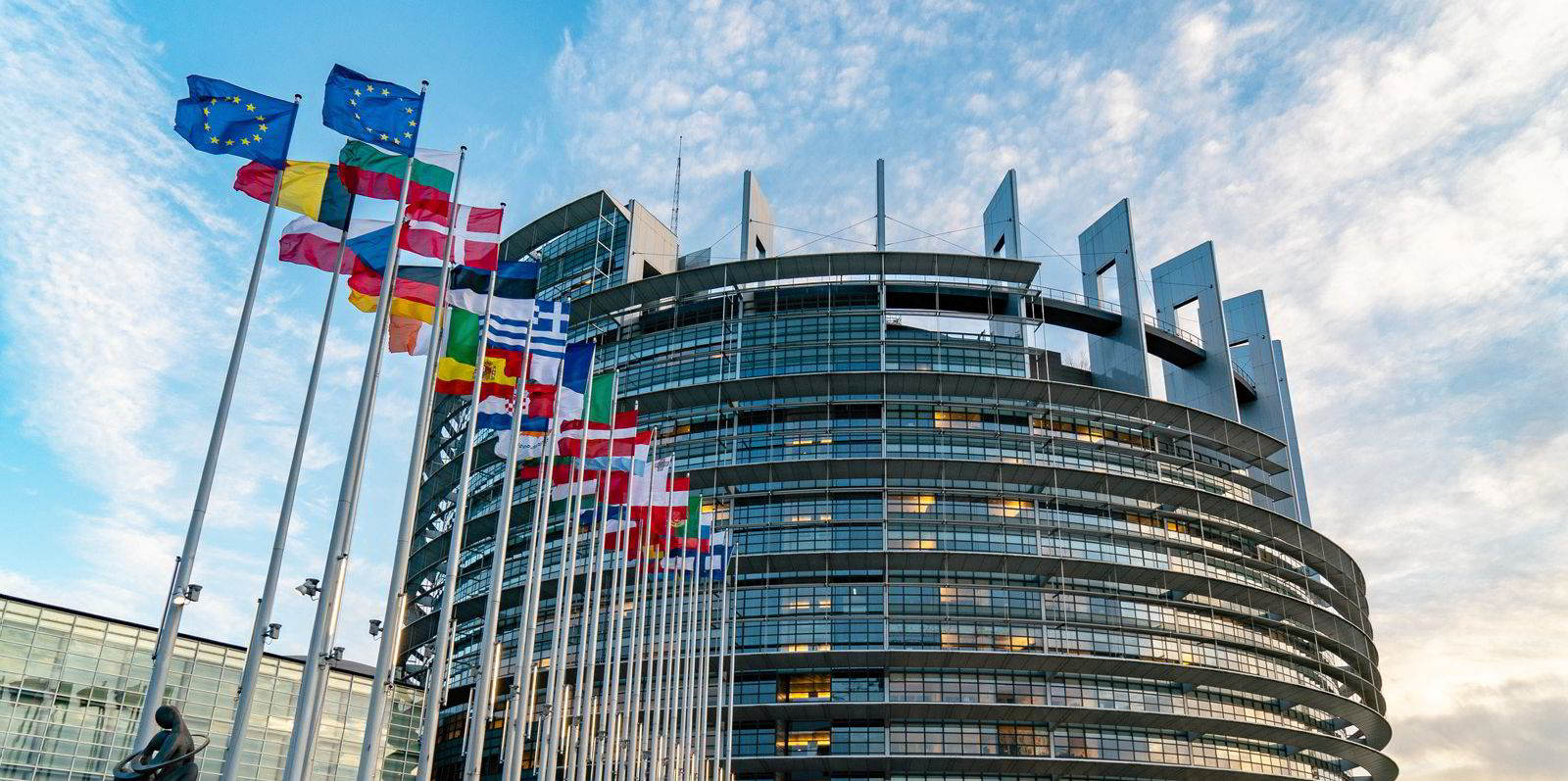Whether driven by the pursuit of decarbonisation through more efficient ships or market dynamics, the European Union’s 2022 Monitoring, Reporting and Verification (MRV) data reveals that emissions in the European maritime industry have not yet returned to 2019 levels, with a relatively modest increase compared with 2021.
And these emissions might not return to pre-pandemic levels in the short term as the EU Emissions Trading System (ETS) and FuelEU Maritime will make emitting carbon on EU routes more expensive.
In 2022, a total of more than 12,200 vessels larger than 5,000 gt made port calls within the EU, collectively emitting 129.1m tonnes of CO2, showing just a 2.1% increase from 2021 but remaining 3% below 2019 levels.
Approximately 68% of these emissions — equivalent to 87.3m tonnes of CO2 — were attributed to international voyages involving EU ports as points of departure or arrival, connecting to destinations beyond the boundaries of the bloc. Domestic emissions were almost 41.8m tonnes, with 33.7m from all voyages between EU ports and 8.1m at berth.
Falling container freight rates, surging bunker costs and declining speeds in the highest-emitting sectors have kept 2022 emissions in check despite strong rises in emissions in passenger and cruise (145%), LNG (55%) and bulk carriers (7.1%).
After experiencing an extraordinary period of disruption from mid-2020 to early 2023 with freight rates 300% to 500% higher than the average, the container ship industry — the biggest EU MRV polluter with 37.3m tonnes of CO2 in 2022 — is now undergoing a process of “normalisation”.
Container ship emissions dropped almost 3.5m tonnes — down 9% year over year — pushed by lower activity and sailing speeds, with the latest expected to continue into 2023 due to the implementation of the Carbon Intensity Indicator and Energy Efficiency Existing Ship Index.
While the container ship segment dominated in 2021, LNG and cruises took the spotlight in 2022. The end of Covid-19 restrictions in all Western countries encouraged tourists to resume international travel, leading to a significant increase in cruise ship emissions, which remain around 14% below pre-Covid levels. However, inflation, already impacting European citizens’ wallets, could potentially slow down or contain the growth in 2023.
China hopes
The hope for a rebound might lie in the return of Asian tourism, especially from China, after the lifting of Covid-19 restrictions in March. The remarkable increase in emissions from LNG carriers in 2022 is obviously attributed to the breakdown of EU-Russia relations due to the war, leading European countries to increase their LNG imports from further regions. However, the current decline in gas prices in Europe and EU storage already filled up to 80% in July could potentially curb or stabilise the growth of LNG carrier emissions this year.
Dry bulk activity into the EU soared in the first half of the year, but lower freight rates and bunker prices seen in the second half of 2022 were not enough to prevent the rise in emissions. For 2023, we anticipate that the trend will reverse, as the surge in dry bulk volumes into the EU’s 27 countries witnessed in 2022, primarily driven by significant restocking of coal from longer distances ahead of the Russia sanctions, is unlikely to be repeated.
In addition to the market dynamics described above, we can also observe a shy start of decarbonisation in the European maritime sector, helping to offset the increase in emissions last year. The operational efficiency of the fleet reporting into the MRV system has slightly improved from 2018 to 2022, and the share of eco vessels in the MRV increased by 2.3% year on year in 2022.

Additionally, the EU fleet is younger and more efficient than the global average, with bulk carriers and tankers being 3.5 and five years younger, respectively, than the global average, and containers being 0.6 years younger.
This “green” shipping trend is expected to continue, contributing to reducing CO2 and consequently, so are carbon costs coming from EU ETS and FuelEU Maritime. Starting in 2024, shipping companies will gradually surrender EU Allowances (EUAs) to the ETS, with 40% of their carbon emissions in 2024, 70% in 2025 and 100% from 2026 onwards.
This directive will significantly impact the entire industry, costing €2.9bn ($3.2bn) in 2024, at a EUA price of €90 per tonne, with costs increasing further in 2025 due to the arrival of the FuelEU Maritime directive.
Younger vessels
The combined cost of the two is projected to reach €7.3bn in 2025 and €9.5bn in 2026, assuming again an unlikely stable EUA price of €90, all EU-bound vessels opting to pay the FuelEU Maritime penalty for not meeting the 2% greenhouse gas intensity reduction target, and stable EU ETS shipping emissions of 84.1m tonnes calculated from the 2022 EU MRV, excluding 50% of international voyages.

It seems evident that a new maritime transport world is coming, from the famous saying “West and the rest” to “EU and the rest”. Slowly but surely, younger and more efficient vessels, powered by dual-fuel LNG and methanol engines, will be mainly dedicated to European business creating a multi-tier market, with old tonnage ending up elsewhere, where decarbonisation costs are currently zero.
Mattia Ferracchiato is head of carbon
markets at BRS Shipbrokers.
Do you have an opinion to share?
Email: news@tradewindsnews.com



